How Stage Makeup Shapes Characters and Ourselves
The Intersection of Art, Storytelling, Self-Acceptance, and Makeup Wipes
Stage makeup has always been a magical tool that enhances storytelling, bringing characters to life and adding depth to their appearance. From beautiful fairy princesses covered in glitter to powerful elderly witches with prosthetic noses, there's a lot of skill and creativity behind crafting these storybook characters. I have graciously played many weird characters that ranged from beautiful to evil, but they all had one thing in common- I couldn’t wait to get that stuff off my face (NOT sponsored by Neutrogena facial wipes). Beyond its theatrical roots, makeup can also help develop a more personal perspective. My journey with stage makeup, particularly with aging effects, reshaped my view on growing old and helped me embrace and celebrate the aging process. But first, we need to learn the basics:
The Role of Stage Makeup in Storytelling
Stage makeup has a rich history in theatre, evolving from simple facial paints to intricate designs using advanced materials. Makeup artists enhance characters' personalities, ages, and emotions through their craft, making them more relatable and believable. Iconic characters like Elphaba in Wicked, Quasimodo in The Hunchback of Notre Dame, and Fiona in Shrek the Musical owe much of their impact to the skillful application of makeup, which helps convey their internal and external struggles with discrimination because of their appearance.
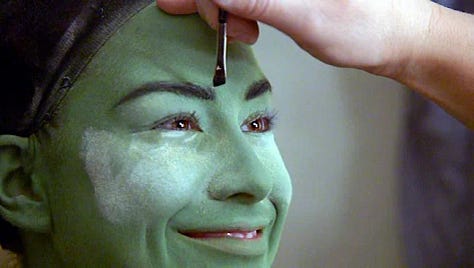
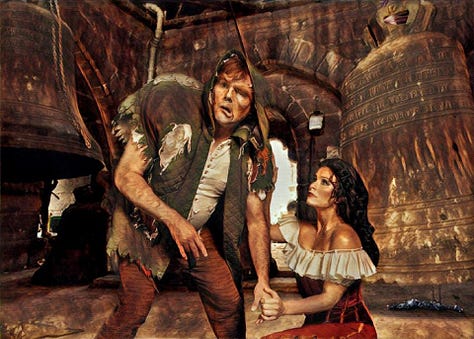
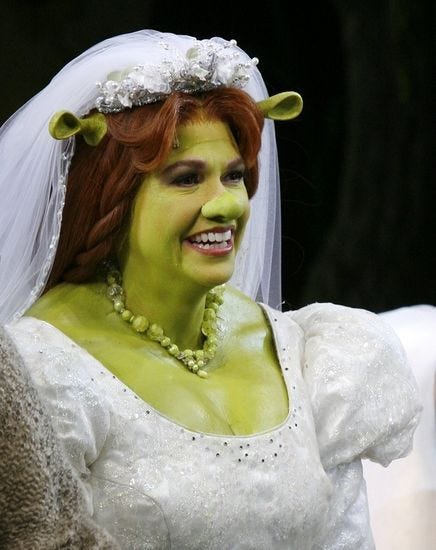
Other musicals like Cats and The Little Mermaid continue demonstrate the transformative power of stage makeup, turning actors into fantastical and otherworldly characters. In Cats, makeup artists create detailed feline faces for each performer, combining contouring, shading, and intricate designs to give every cat a distinct personality and look. In The Little Mermaid, makeup artists transform actors into underwater creatures like mermaids, sea witches, and fish by mimicking scales, gills, and fins!
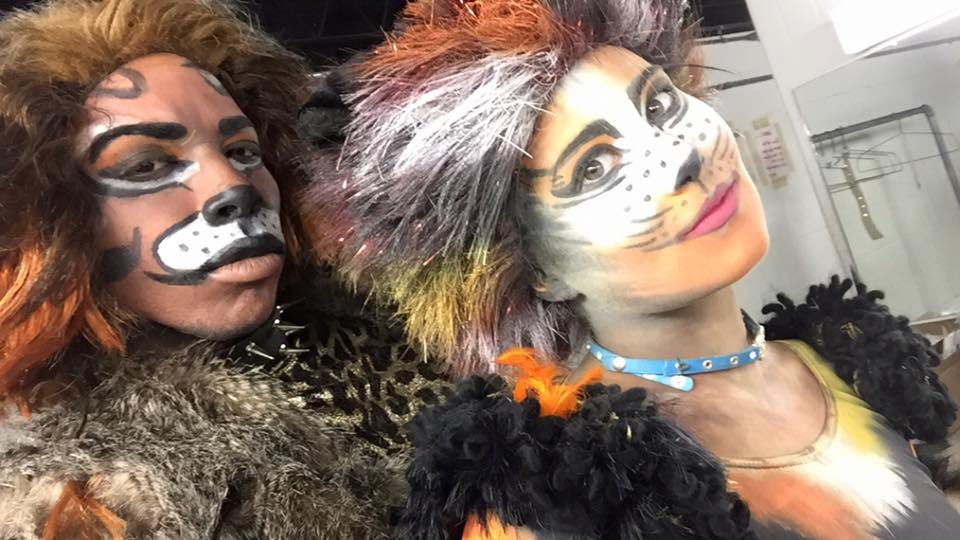
Beyond enhancing characterization, stage makeup often carries symbolic weight, reflecting time, hardships, and battles. In productions like Les Misérables, makeup shows the wear and tear on characters’ faces, symbolizing their hardships and resilience. Similarly, in The Outsiders on Broadway, makeup depicts the physical consequences of the characters' rumbles, showing pain and struggle through cut foreheads and bruised eyes. These subtle makeup details reinforce themes and motifs, making them crucial elements of the story.
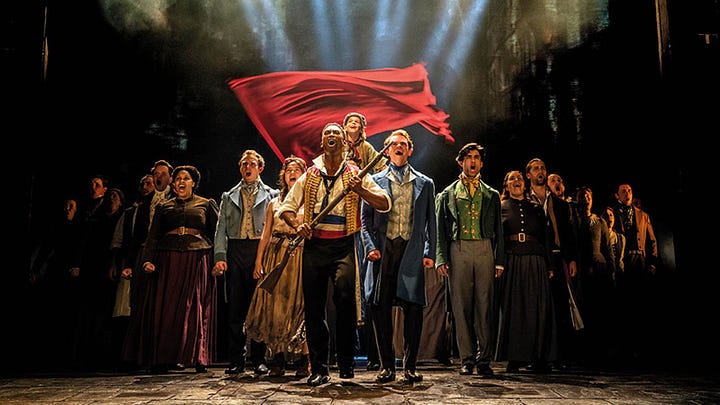

The intricate designs and creative applications of makeup in these shows highlight the artistry and skill involved in theatrical transformations, enhancing the storytelling and captivating the audience by altering an actor’s appearance.
Techniques and Tools of the Trade
Stage makeup artists and actors use various techniques to transform themselves into characters.
Contouring involves applying darker shades to areas like the cheekbones, jawline, sides of the nose, and temples to create shadows and give the illusion of depth. Highlighting, on the other hand, uses lighter shades on the tops of the cheekbones, bridge of the nose, center of the forehead, and brow bone to bring these areas forward and catch the light. These techniques can make a face appear more harsh, soft, feminine, masculine, or aged, depending on the character's needs.
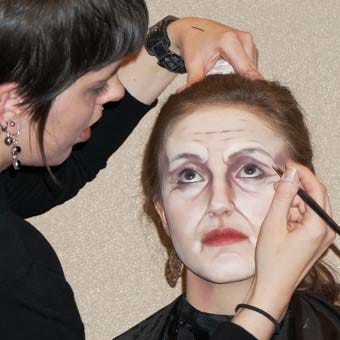
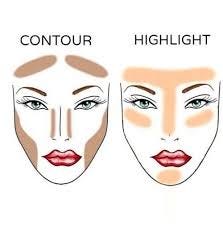
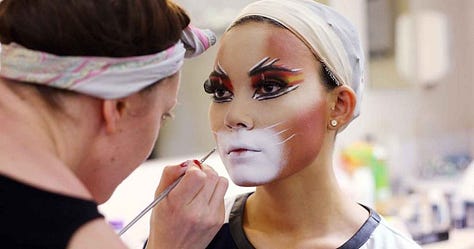
Eyebrow shaping also impacts a character’s look, with thicker, more arched eyebrows often giving a more intense or villainous appearance, while thinner, straighter eyebrows can make a face look softer and more innocent…or, like you’re from the 90’s.
Color theory is also crucial because the right color(s) can convey different emotions and characteristics, such as using cool colors for a sickly or ghostly look and warm colors for a healthy, bright appearance.
Special effects makeup, involving prosthetics and latex, can bring magical creatures or painful looking injuries to life- adding another layer of realism for the audience. But, did you know that wigs are also considered a prosthetic? Wigs and crepe hair can be styled to match historical periods or create fancy hairstyles. Temporary hair dyes and sprays can change an actor’s hair color to suit a role without permanent changes (hopefully your production company pays for this investment if they have you visit a salon).
Character Examples from Shows
Wicked Witch in The Wizard of Oz:
Playing the Wicked Witch requires green face paint for her iconic look, with heavy contouring to create a sinister facial structure. Prosthetics are used for the nose and chin, enhancing her classic witch-like appearance. This transformation involves mastering the application of these elements to ensure they stay in place throughout the performance, while also being comfortable for the actor when speaking and cackling.
The Beast in Beauty and the Beast:
Transforming into the Beast involves using prosthetics to create features like a snout and other animalistic traits, like overly arched brows. Contouring techniques help to accentuate these features, making the face appear more ferocious. Wigs and crepe hair also to the Beast’s mane and arms, while special effects makeup helps decipher him from his human form as Prince Adam (spoiler, oops!), using latex and other materials to achieve this believable change.
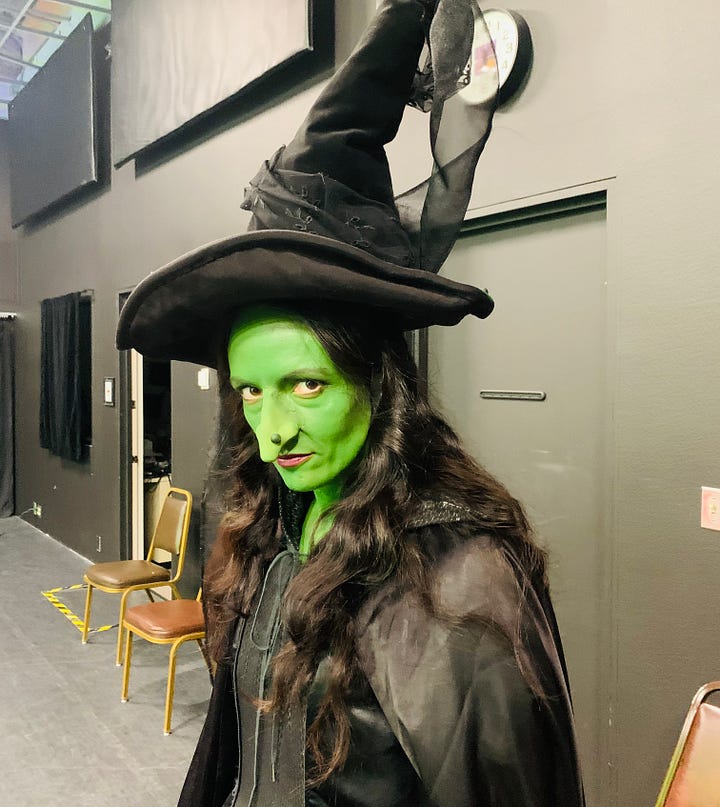

A Personal Healing Journey with Stage Makeup
Applying stage makeup allowed me to confront my fears about aging- is it really that deep? No, but it was for me in that moment. One early Monday morning, I woke up to film projections with our cast for The Wizard of Oz, as Aunt Em for the twister scene. As I applied my base makeup, I grabbed a brown ELF eyeliner to draw lines and freckles on my face to turn into Aunt Em, Dorothy’s tough loving aunt who helps run the family farm. Running the eyeliner along the smile lines of my skin and dabbing sun spots on my cheeks, I watched myself grow older and older. Then, I felt an unexpected shift in my mindset, almost like a realization?
For more than half my life, I struggled to see a future for myself, unable to imagine growing old due to mental health issues resulting from traumatic experiences when I was much younger. This large aspect of my life that now seems minuscule compared to how I currently lead life sparked a moment in front of the makeup mirror that was eye opening. Seeing an older version of myself, I felt a sense of excitement and acceptance about the future- a future far ahead of where I am now. This 8am realization was a powerful moment of self-acceptance, healing, and celebration of how far I’ve come to finally feel grounded and love my life.
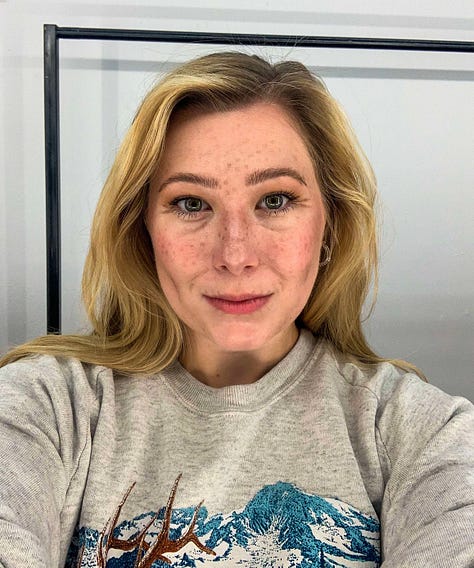
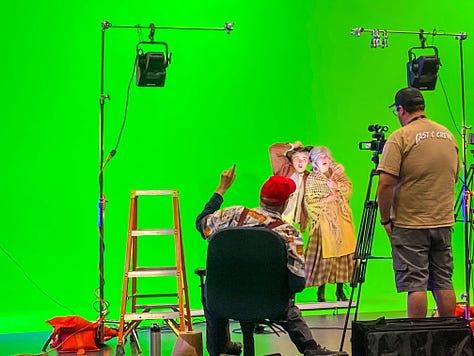
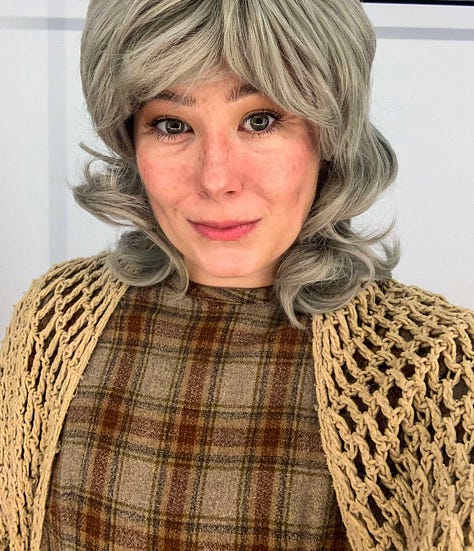
Think About It
Stage makeup is a powerful medium that brings characters to life from the page to the stage, allowing actors to see parts of themselves in their roles. My journey with stage makeup, especially embracing the idea of aging, has shown me that art can influence how we view ourselves and our potential. By exploring the transformative power of art, whether in theatre, dance, music, or visual arts, we can all find ways to celebrate our lives and these characters that we have the honor and responsibility to tell their stories as we create ours.
*988 Suicide & Crisis Lifeline: 9-8-8
*Crisis Text Line: Text HOME to 741741





I’ve always loved the transformative power of makeup— it changes the character every time.
Love this!!!!